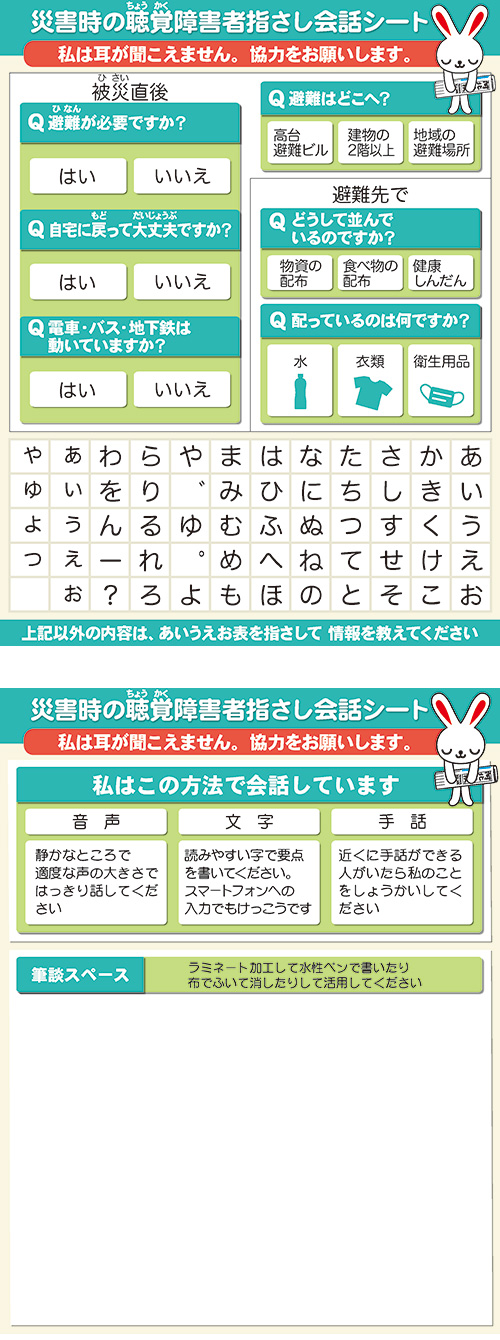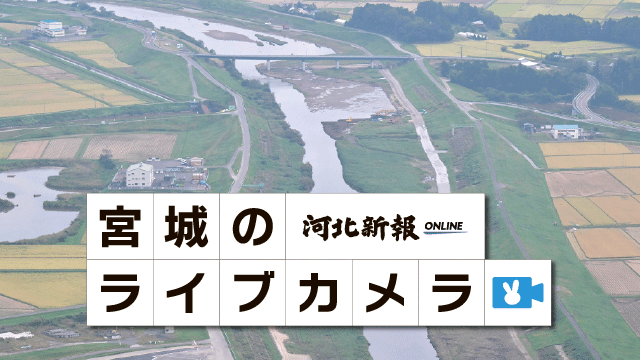Part 6: Shaking (2) Earthquake Resistance / Without Sufficient Strength, Buildings Collapse and Live




At towns and cities throughout inland areas of Iwate, Miyagi and Fukushima Prefectures, a total of 6,731 homes collapsed completely in the Great East Japan Earthquake. Most of this damage was thought to have been caused by seismic motion, including aftershocks. There were people crushed beneath residences across the region.
Osaki City, where the main shock reached a seismic intensity of 6-upper. Takeharu Sasaki (18), then a freshman in the part-time program at Furukawa Technical High School, was in his bedroom in a one-story building. As the tremors dragged on and on, he became frightened and went to turn off the kerosene space heater. The next instant, the entire house gave a violent shake. Takeharu was thrown into the air for an instant, then slammed back into the ground.
Fearing for his life, he ran outside and clung to a pole that had previously held a TV antenna in front of the house. As the ground shuddered and thrust upwards, his body jumped up as well, and he lost his grip on the pole countless times.
CRACK! With a tremendous noise, the house collapsed down on him. The living space was squashed flat, while the roof hit the pole and stopped.
Takeharu was stunned for a while, but suddenly realized that his grandfather Yasuhide (80) had been watching television in the living room. He ran to where the living room used to be, and called out. “I’m over here,” came the reply.
His father Sueharu (62) broke through the earthen wall, and found Yasuhide with his legs trapped beneath a beam. Neighbors brought together tools, working together to bring him out and send him to the hospital in an ambulance. However, due to internal bleeding causing a drop in blood pressure, Yasuhide breathed his last, just before dawn the following day.
When he was rescued, Yasuhide was clutching a key. He had been head of the administrative district until a year before the disaster, and still had the key to the meeting hall that also served as an emergency shelter. The brief time it took him to retrieve that key had prevented him from escaping.
There were many reasons for the house's collapse. It was 90 years old. The construction method was no more than wooden pillars placed on stone bases buried in the ground. It had few walls, but many glass doors. The roof had tiles of galvanized iron over a layer of thatch. It did not meet the government's earthquake-resistance standards, which became more rigorous from 1981.
The standards call for buildings strong enough to protect human life, and to withstand a seismic intensity of 6-upper to 7. However, the family had never even heard of the term, “earthquake resistance standards.”
When the idea of home remodeling came up in conversation, Yasuhide had dismissed it. “What's the point of fixing the house? There's bound to be an earthquake off the coast of Miyagi soon, and then the house will break anyway. Just built a new home after that.”
“I'm sure he never dreamed that it would collapse so completely, let alone being caught beneath it,” Sueharu laments.
A survey by the Kahoku Shimpo found that at least 12 disaster victims died from buildings collapsing. There are also believed to be victims in coastal areas who were killed before the tsunami reached them.
The main shock of the Great East Japan Earthquake had few tremors with the frequency that brings great damage to wooden buildings. Yet, the fact that buildings collapsed one after another demonstrates that the spread of earthquake-resistant construction is still insufficient.
◎Underutilized earthquake resistance subsidy / Movements in the community to encourage seismic diagnosis
The Great East Japan Earthquake made disturbingly clear how important it is to improve the earthquake resistance of wooden homes. The government has set a goal: by 2020, 95% of Japan's wooden homes will be earthquake-resistant. Working with local governments, it will provide subsidy for seismic diagnosis and repair of wooden residences. Still, there is a large gap between government policy and actions taken by residents.
As of 2008, 79% of Japan's buildings were earthquake-resistant. The six prefectures of the Tohoku region all fall below the national average, including Iwate at 67%, Miyagi at 77%, and Fukushima at 76%.
The project targets wooden homes built before May 1981, when the standards were made stricter. The subsidy varies by municipality, and in the case of Miyagi Prefecture, over 130,000 yen is issued for inspections, 150,000 to 950,000 yen for the repair work.
The trouble is that there is low interest and awareness in earthquake resistance, leaving these programs underutilized. According to a post-disaster investigation by organizations such as the Miyagi Prefecture Association of Architectural Firms, 39% of the people who used these aid programs to receive seismic diagnosis in the 2011 fiscal year had never heard of the programs before the earthquake.
When the earthquake resistance inspectors looked into the condition of 130 homes that had carried out repairs before the quake, they found that 55% had suffered no damage at all. 40% only took light damage. 5% suffered serious damage, but the main causes were ground settlement and the collapsing of retaining walls. The effectiveness of earthquake-resistant construction had been verified again.
When it comes to repair work, the financial burden is one factor that keeps residents from taking action. The cost varies according to the condition of the house, but in Miyagi prefecture such repair work goes for about one to two million yen. The prefectural Association of Architectural Firms asserts, “The construction cost may be high, but in order to save lives, there is significant value in taking a large amount of aid money from taxes and adding it to individual assets. We hope people would actively take advantage of these programs.”
One solution to encourage seismic diagnosis and move people toward repair work is to incorporate these programs into regional disaster preparedness efforts.
In Yagiyama, Taihaku Ward, Sendai City, the Yagiyama Disaster Preparedness Network appointed local architects as “house doctors.” They put in great effort to spread the word on earthquake-resistant construction, such as teaching courses that educate local residents and the students of Yagiyama Junior High School on seismic diagnosis.
They also worked with the students of Tohoku Institute of Technology High School (now Jonan High), conducting a demonstration of seismic diagnosis. Looking over the blueprints together, they measured the distance between pillars and the thickness of walls to calculate the earthquake resistance level of wooden residences. If the diagnosis showed the house to be at risk, they referred the homeowner to an expert for a consultation.
In 2009, the neighborhood association head and Taihaku Ward office staff went on a door-to-door campaign in their neighborhoods, visiting each house to convince the residents to receive a seismic diagnosis. In 2010, they spent a week distributing diagnosis application forms to 74 homes, and six homes applied for inspections right away.
There are even homes that came out of the Great East Japan Earthquake unscathed, thanks to the diagnoses and repair work prompted by these campaigns. Yagiyama Disaster Preparedness Network vice president Mitsuo Saito (74) says, “When someone familiar takes the time to think and act alongside the residents, it helps them to take that first step. And when we educate the children, it can make the whole family more conscious of disaster preparedness.”
◎Measures against stuck doors
Earthquake-resistant apartment buildings avoided collapse in the Great East Japan Earthquake. On the other hand, there were cases in which the violent, extended tremors caused areas around doors to break, leaving some people trapped inside.
“My daughter said, 'The door won't open,' and slammed her body against the door,” recalls housewife Takako Sugawara (64) of Nakakura 2-Chome, Wakabayashi Ward, Sendai City. She lives in a seven-story apartment building. When the main shock passed, she tried to head outside with her second daughter (34) and three-month-old grandchild.
But the door did not budge. “Please help!” The tenant next door heard their voices and came to help. As the neighbor pulled on the door from the outside, Sugawara's daughter slammed her body into it. After repeating this several times, they were finally able to force the door open.
Tomofumi Sano (64) is the caretaker of another apartment building in Yamato-machi 4-Ch?me, Wakabayashi Ward. The building is 13 stories high, and the doors were stuck in many of its homes. Says Sano, “We pried over 30 doors open with crowbars. We needed the power of three men to get some of them open.”
In both buildings, the doors stuck because the shaking warped doors and door frames out of shape. As construction codes focus on keeping buildings from collapsing, there are no legal standards for the strength of doors. The quake had struck right at a blind spot in the law.
The Sendai City Fire Department reported 39 cases of rescuing people trapped inside buildings during the disaster, including the aftershocks. Nine of these cases are believed to have been caused by damaged doors and shutters. This would threaten lives if a fire were to break out, and slow tsunami evacuation in coastal areas.
Equipment such as outdoor unit of air conditioners and water heater tanks also fell down in the quake, hindering the return to normal life.
Reiji Tanaka, Professor Emeritus at the Tohoku Institute of Technology (Architecture and Seismic Engineering), points out, “When we think about earthquake resistance for apartment buildings, we need to consider doors and any other equipment that directly affect daily life. This earthquake has shown us that we need to create new benchmarks regarding earthquake resistance.”
Translated by Cecilia Caride
May 18, 2013 (Sun.)
[Japanese] http://www.kahoku.co.jp/special/spe1114/20130520_01.html
 朝刊・夕刊
朝刊・夕刊 記事を探す
記事を探す FAQ
FAQ















